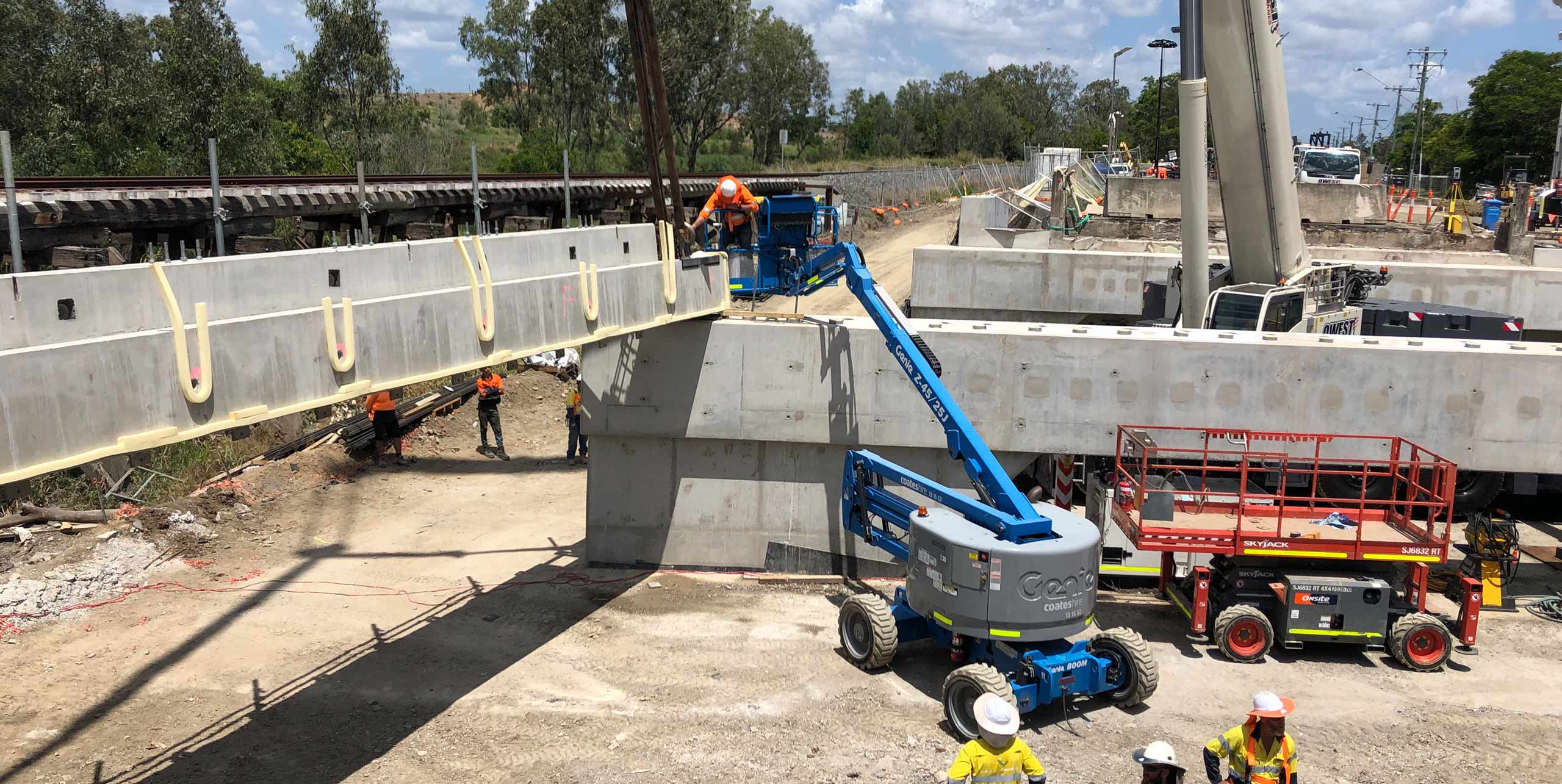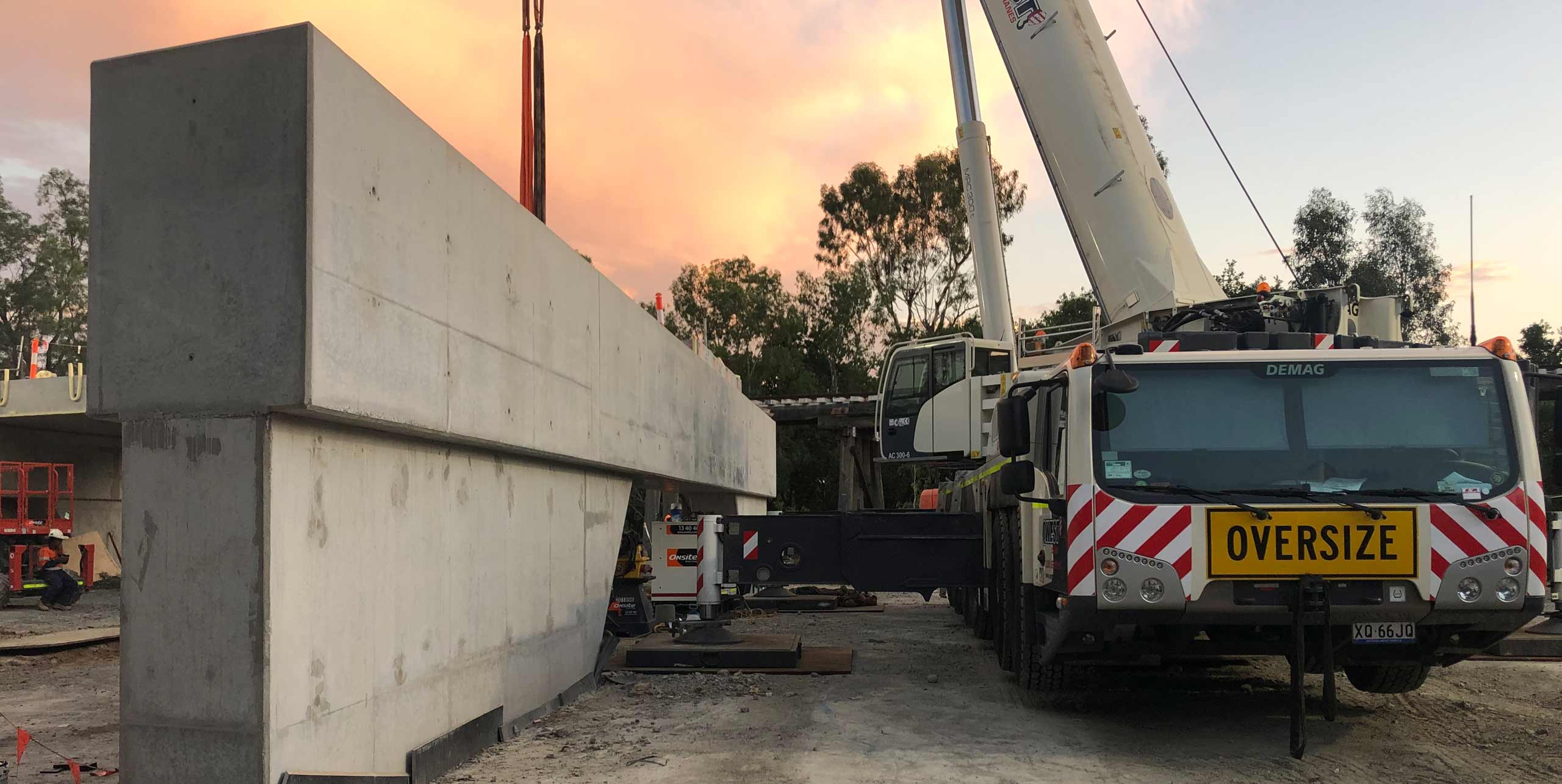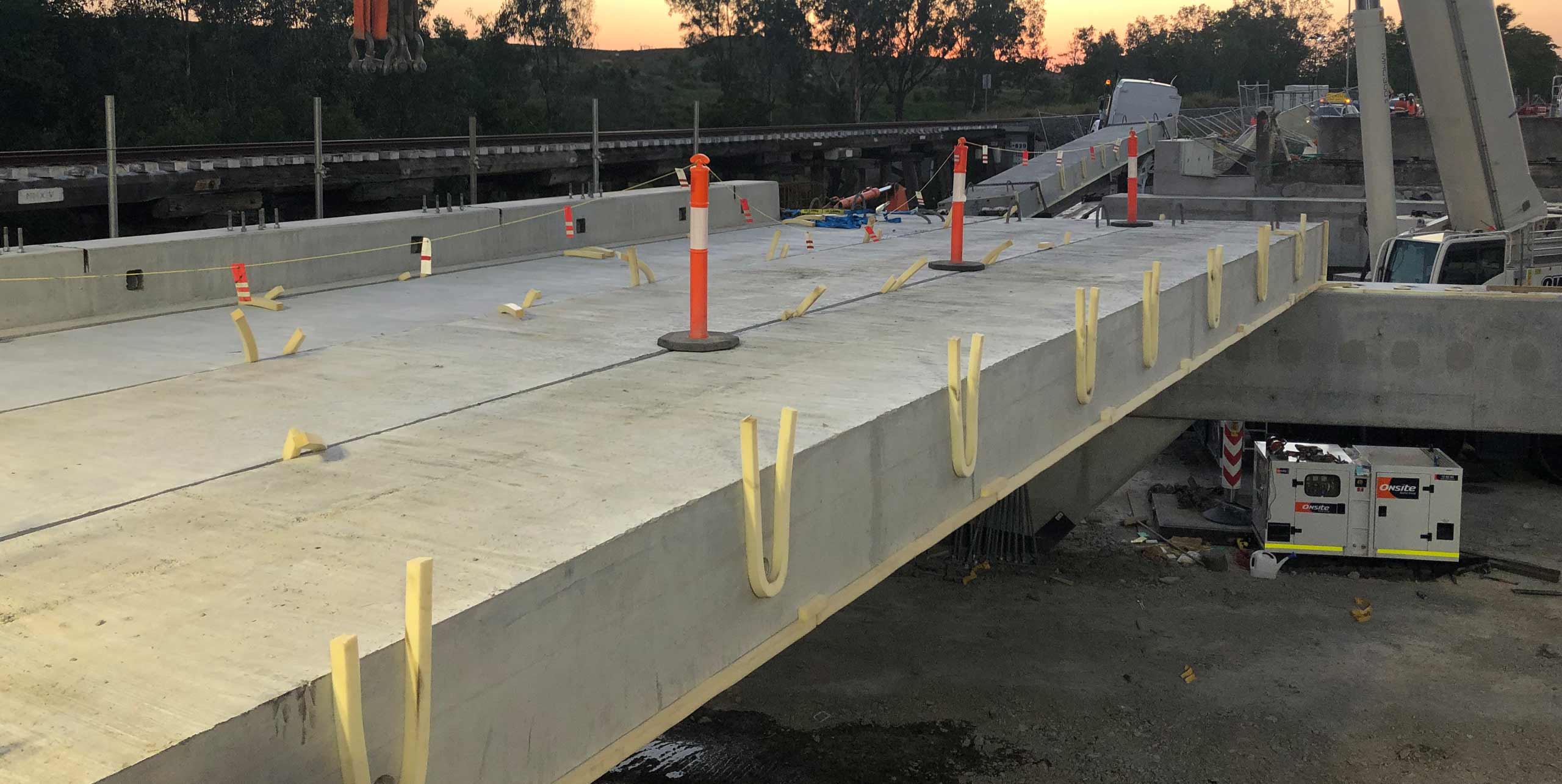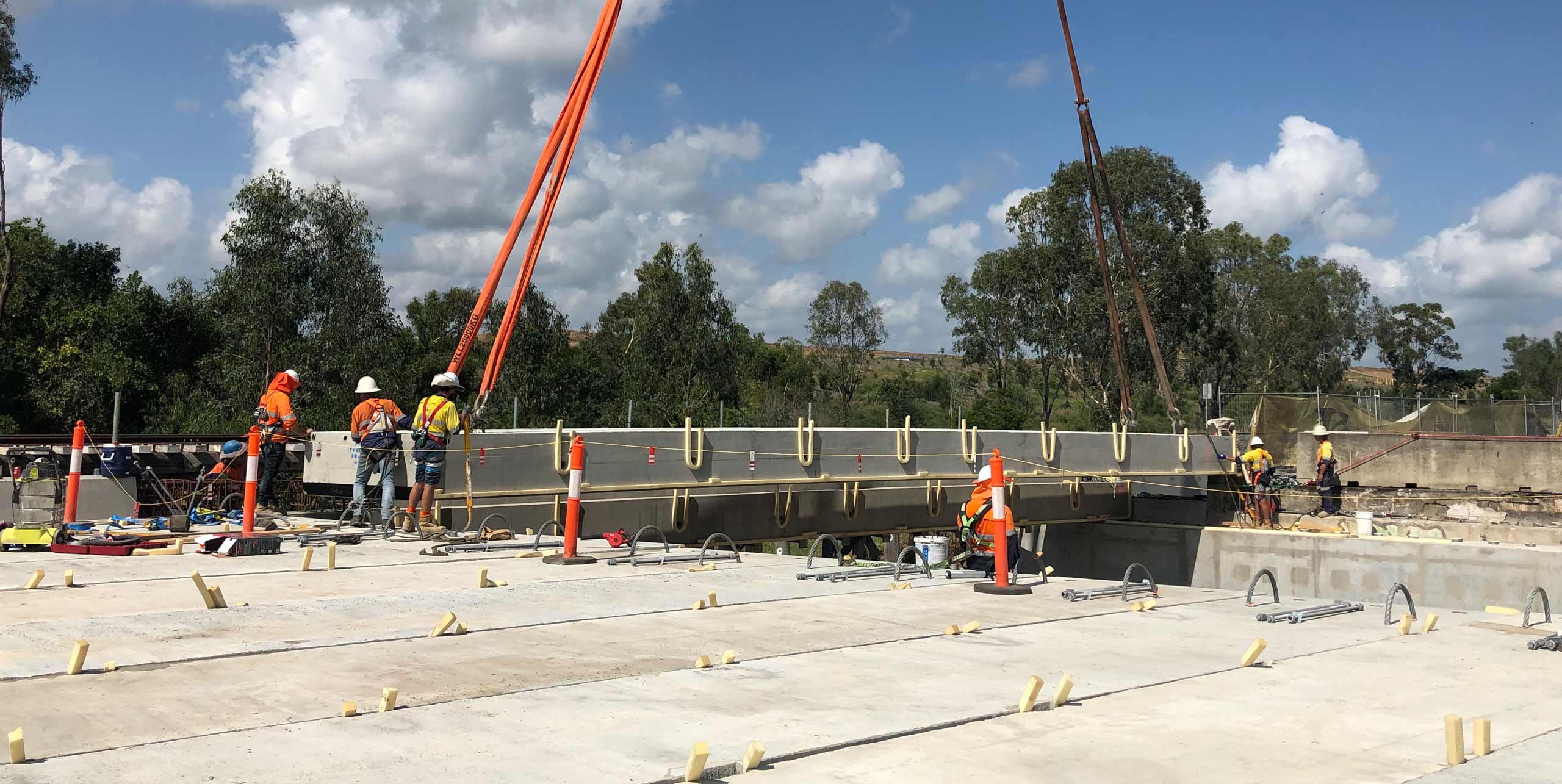
The solution
In order to overcome the challenges faced by TMR in developing a Type 1 Road Train road bridge, SMEC presented a new proposal to replace the road bridge within a short 80-hour road closure period.
The key solutions presented in SMEC ‘s proposal involved a one-of-a-kind deck unit, fast curing grout systems in line with the latest technologies, and a bespoke mix design developed to respond to site constraints. The solution was well-received by TMR as the option resolved all the physical constraints of the project.
Precast sections
To deliver a design that met the requirements of the brief, the design team made use of precast elements wherever possible, researched and specified a range of suitable specialised fast-curing grout products for individual applications, and adopted design details that facilitated easy, rapid, and low-risk installation.
The geometry of the bridge was governed by the need to allow construction of most of the bridge elements – including the foundations, substructure, and a section of the bridge deck – prior to the road closure in order to minimise the number of construction activities needing to be undertaken within this window. An innovative one-of-a-kind triple hollow deck unit for road bridges was designed to minimise the number of lifting operations, in order to limit traffic control disruptions during online construction and to optimise time during the road closure window.




The impact
SMEC pushed through technical boundaries to develop and implement innovative solutions that successfully enabled the delivery of a full bridge replacement in 80 hours.
On completion of the project the team successfully achieved the outcomes of:
- Minimum disruption and impact to existing assets within and adjacent to the bridge footprint including third-party services, adjacent Queensland Rail bridge, private property north of the site (Betapoly) and Thozet Road intersection;
- Improved construction safety by reduced in-site construction in and around waterways and adjacent to live traffic;
- Introduction of the latest technology in fast-curing material to minimise construction duration;
- Introduction of an innovative triple-hollow deck bridge system to the industry;
- Introduction of a bespoke concrete mix design to suit project constraints.
This innovation will support the Queensland State Government in achieving their commitments to local industry and support economic growth in the region by minimising disruption to an essential supply route during construction and by providing a long-term access route for Type 1 Road Trains into the future.




